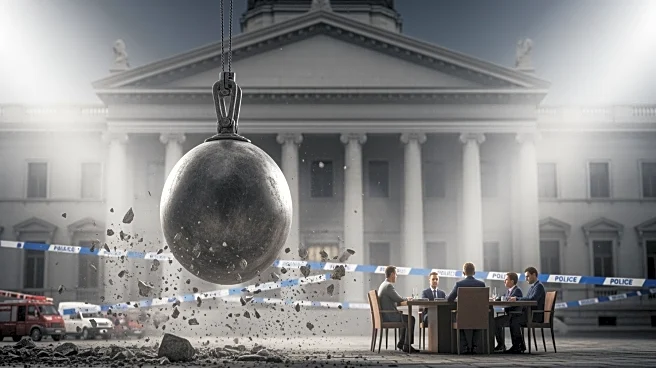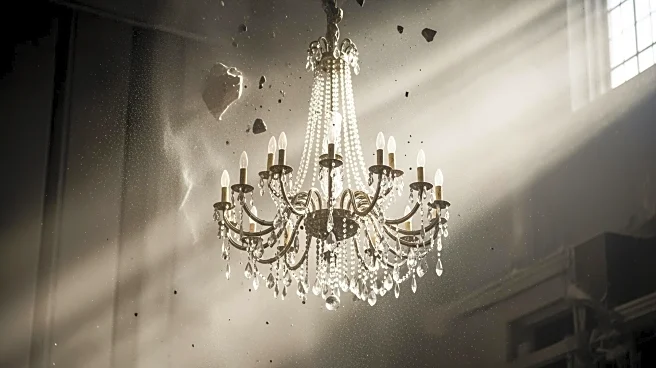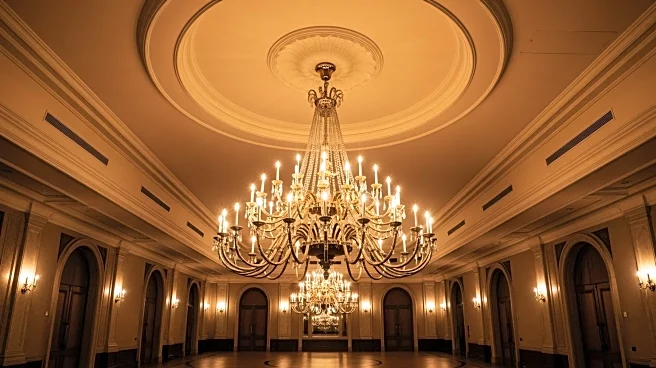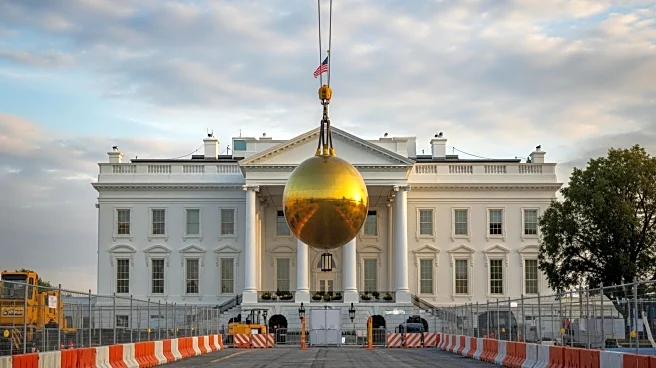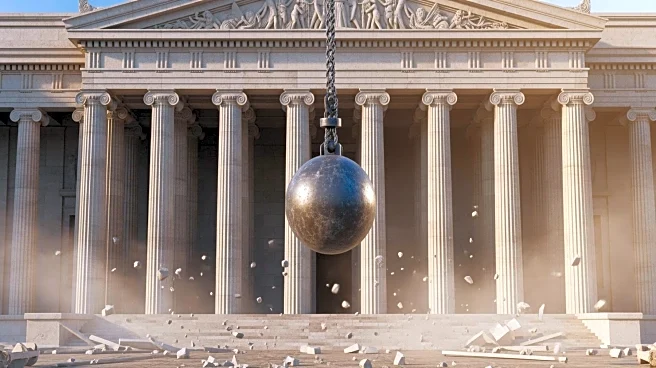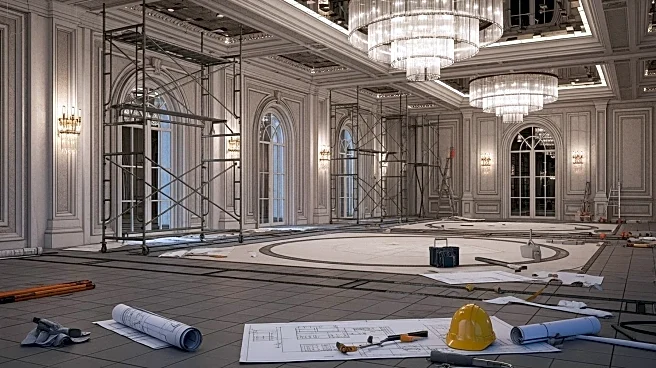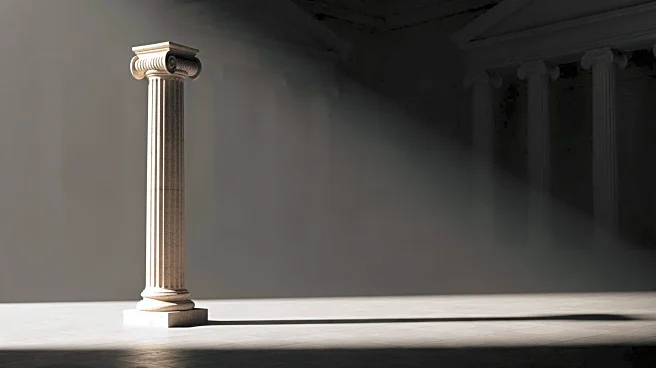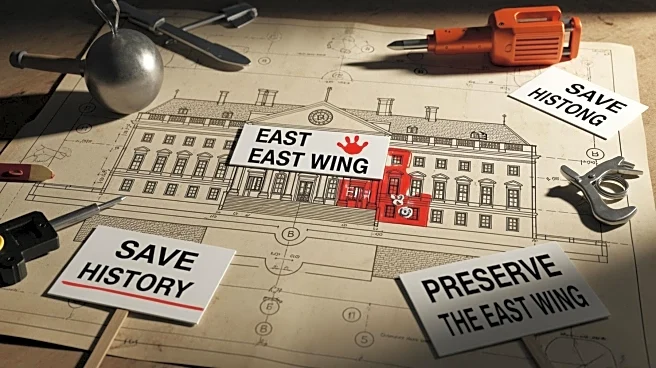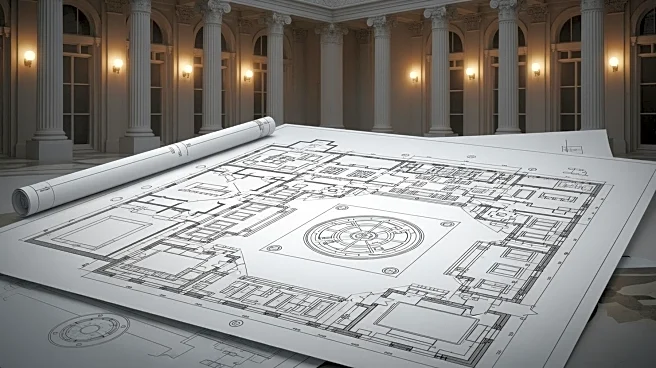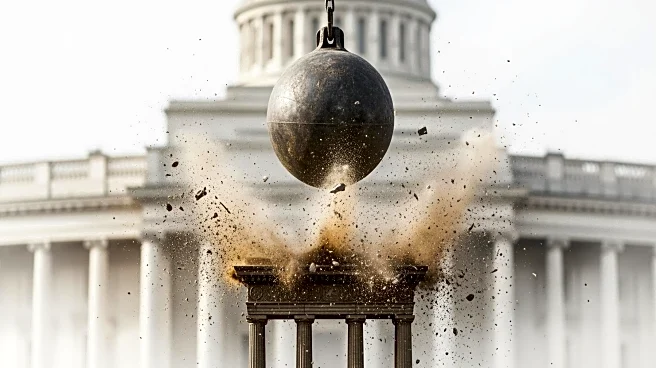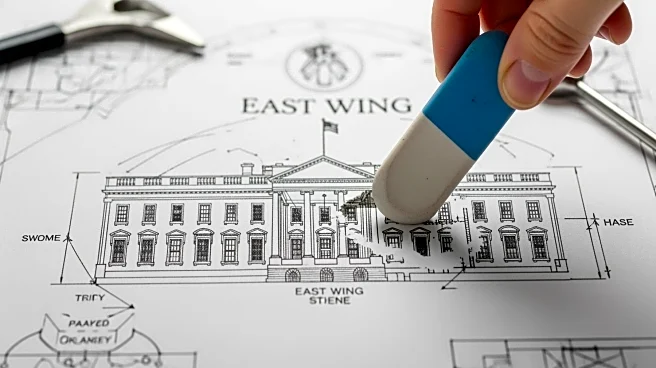What's Happening?
Between October 20 and 23, crews have been actively demolishing sections of the White House East Wing to pave the way for a new ballroom planned by President Trump. The project, estimated to cost $300 million, involves significant changes to the historic
structure, which has sparked criticism from various political figures and preservationists. The demolition is part of Trump's broader plan to modernize the White House, despite concerns about the impact on its historical integrity.
Why It's Important?
The demolition of the East Wing is a significant event, as it involves altering a historically important part of the White House. Critics argue that the project undermines the historical integrity of the building, with figures like Senator Angus King and former First Lady Hillary Clinton expressing concerns. The project raises questions about fiscal priorities and the preservation of national landmarks, with public opinion divided on the issue.
What's Next?
The demolition is expected to continue, with the ballroom construction following. The National Trust for Historic Places has urged a pause for review, but President Trump has defended the project, citing extensive architectural studies. The debate over the project may influence future discussions on the preservation of historical sites versus modernization needs.
Beyond the Headlines
The demolition raises broader questions about the balance between historical preservation and modernization. It reflects ongoing debates about how national landmarks should evolve to meet contemporary needs while respecting their historical significance. The project may set a precedent for future renovations of historically significant buildings, influencing how such decisions are made and the stakeholders involved.
